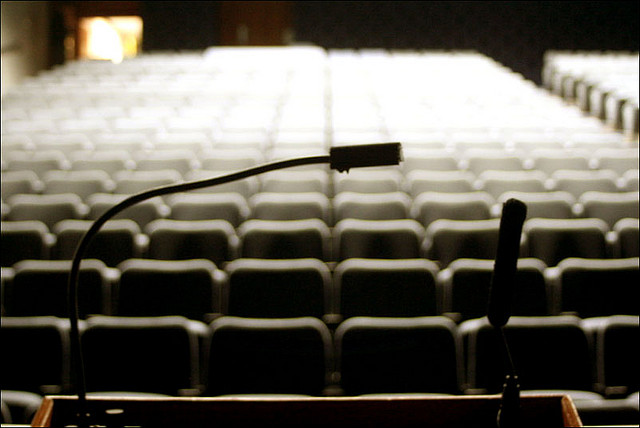In an opinion piece in The Australian today I argue that while COAG’s recent counterterrorism strategy (PDF) usefully outlines the importance of engaging the Australian public (and a range of other sectors such as business) to achieve our goals in safeguarding Australia against terrorism, it’s disappointing that the document failed to note the role of universities in our counterterrorism strategy.
Even though terrorist attacks against academic institutions are rare, Australian universities are potential targets. While some campuses are geographically expansive, many have concentrations of staff and students, making them very densely populated. By their nature universities are public places, with freedom of movement making them difficult to police. That said, we certainly wouldn’t want our universities to be turned into armed fortresses.
Universities are places where students, irrespective of background, gather to be educated in an open environment where they can challenge conventional wisdom. They’re also a potential source of recruitment of vulnerable students by various extremist groups.
It should be noted, however, that among those convicted or accused of jihadist terrorism related crimes in Australia, only a few individuals have been university graduates. Based on ASPI’s recent study, few of Australia’s Gen Y jihadists passed through Australian universities. Some had been expelled from school, some had completed secondary education and many held blue-collar jobs.
Numan Haider had, however, been enrolled in an electrical engineering course at Dandenong TAFE. Suhman Rahman was studying building management at the Royal Melbourne Institute of Technology. Tareq Kamleh, who appeared in an ISIL propaganda video calling for medical professionals to join him in Syria, completed medical studies at the University of Adelaide.
Our universities house materials that could be used as weapons either directly or indirectly, such as chemicals or hazardous materials in laboratories including pathogens and other dangerous biological material.
Several years ago a joint study (PDF) by Australia’s Department of Defence and Department of Foreign Affairs and Trade detailed a range of dual use technologies and chemical and biological agents that may be adapted to military applications and weapons of mass destruction programs. The document highlighted the problem of terrorists attempting to exploit university-based research for harmful purposes.
Our universities can assist in countering terrorism through independent research that might assist to produce better policy approaches and strategies.
Through their counterterrorism educational and professional development programs, universities such as Charles Sturt, Macquarie, Edith Cowan and Swinburne are producing more engaged security professionals.
Through outreach activities, universities can raise community awareness on terrorism-related issues and inform public discussion of terrorism and counterterrorism matters. A recent example is the Australian government’s support to the Australian Nation University and Deakin University to bring together expertise at our universities to counter violent extremism.
Another example is the Research Network for a Secure Australia, a multi-disciplinary collaboration established to strengthen Australia’s research capacity to enhance the protection of the nation’s critical infrastructure against potential natural or human-caused disasters, including terrorism. It has over 600 members.
There’s an Australian terrorism and political violence postgraduate researchers network that links junior academics working in terrorism studies. It’s part of the Australian arm of the Terrorism Research Initiative’s National PhD Network project, who seek to collaborate on research and professional activities that benefit terrorism studies in Australia.
Generally speaking, however, the university–government nexus is pretty weak in Australia when it comes to counterterrorism. There’s nothing here like the close connections that US government agencies have with institutions such as the Combatting Terrorism Center at Westpoint or the START program at the University of Maryland.
When it comes to Australian defence policy, by contrast, several academics and ‘think tankers’ were on an external expert panel that produced a community consultation paper on defence policy issues (PDF) that’s being fed into this year’s Defence White paper. Academics were among those that made submissions to the expert panel.
There was no attempt to run a similar process that would’ve engaged academics (and others) in the production of COAG’s recent report, Australia’s Counter-Terrorism Strategy.
There nothing in the counterterrorism space that draws academic researchers into something akin to the Trusted Information Security Network. TISN is the key national engagement mechanism for business-government information sharing on critical infrastructure resilience.
A regular information-sharing forum should be established between the counterterrorism community at both the federal and state levels and the peak body, Universities Australia, along with relevant specialist representatives from those schools or centres that possess expertise. The forum could cover issues related to research requirements as well as address education and training issues.
Perhaps Australian academics involved in teaching and researching terrorism and counterterrorism might consider establishing a national university consortium focused on promoting education and research in the field.


